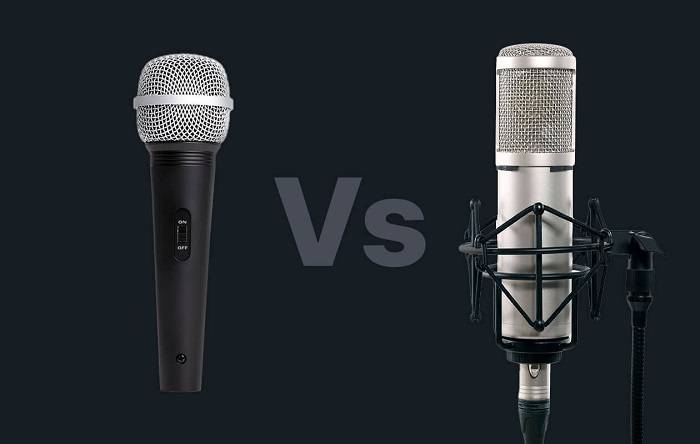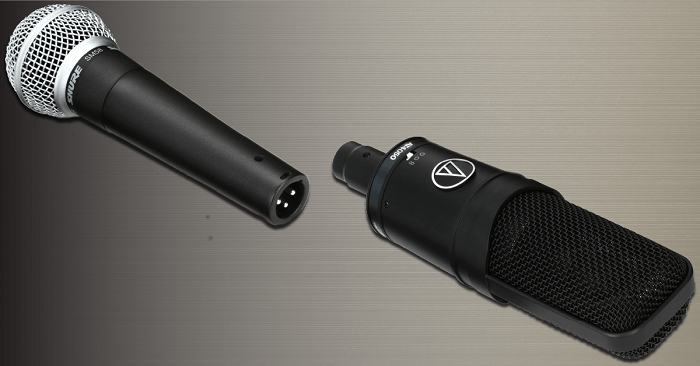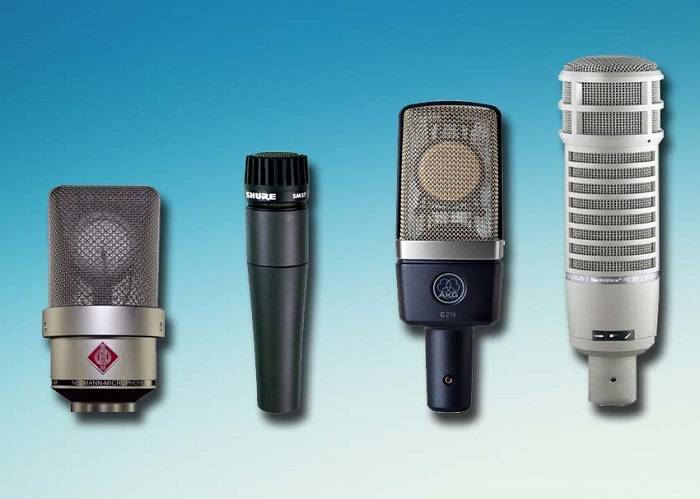Table of Contents
In the realm of audio recording and live sound reinforcement, the choice of microphone plays a crucial role in capturing clear, natural, and high-quality sound. Two of the most common types of microphones used in professional and amateur audio applications are dynamic microphones and condenser microphones. In this comprehensive guide, we’ll delve into the differences between dynamic and condenser microphones, their respective characteristics, applications, advantages, and best practices for optimal use.
Understanding Dynamic Microphones and Condenser Microphones:

Dynamic microphones and condenser microphones are two distinct types of transducer technologies used to convert sound waves into electrical signals. While both types serve the same fundamental purpose of capturing audio, they differ significantly in their construction, operation, and performance characteristics:
- Dynamic Microphones: Dynamic microphones utilize electromagnetic induction to generate an electrical signal in response to sound waves. They feature a simple design consisting of a diaphragm, voice coil, and magnet. When sound waves hit the diaphragm, it vibrates, causing the attached voice coil to move within the magnetic field, thus generating an electrical signal. Dynamic microphones are rugged, durable, and versatile, making them ideal for a wide range of applications, including live performances, studio recording, broadcasting, and instrument miking.
- Condenser Microphones: Condenser microphones, also known as capacitor microphones, operate on the principle of electrostatics. They consist of a thin diaphragm placed in close proximity to a charged backplate, forming a capacitor. When sound waves hit the diaphragm, it vibrates, causing changes in the capacitance between the diaphragm and backplate, thus generating an electrical signal. Condenser microphones are known for their sensitivity, accuracy, and wide frequency response, making them well-suited for studio recording, vocals, acoustic instruments, and critical audio applications.
Characteristics of Dynamic Microphones:
Dynamic microphones exhibit several key characteristics that set them apart from condenser microphones:
- Durability: Dynamic microphones are rugged and durable, with robust construction that can withstand rough handling, high SPL (Sound Pressure Level), and adverse environmental conditions. They are often used in live sound reinforcement and on-stage performances where reliability is essential.
- Directionality: Dynamic microphones typically have a cardioid polar pattern, meaning they are most sensitive to sound coming from the front while attenuating sound from the sides and rear. This directional pickup pattern helps isolate the desired sound source and reduce background noise and feedback.
- Low Sensitivity: Dynamic microphones have lower sensitivity compared to condenser microphones, meaning they require higher sound pressure levels to generate an equivalent electrical signal. This makes them less prone to distortion and overload in high-volume settings.
- Affordability: Dynamic microphones are generally more affordable than condenser microphones, making them an economical choice for beginners, enthusiasts, and budget-conscious users. They offer excellent value for money without compromising on performance or durability.
Characteristics of Condenser Microphones:

Condenser microphones possess distinct characteristics that make them well-suited for certain audio recording and broadcasting applications:
- Sensitivity: Condenser microphones are highly sensitive, capable of capturing subtle nuances and details in sound with exceptional accuracy. They offer a wide frequency response and transient response, making them ideal for capturing vocals, acoustic instruments, and studio recordings with pristine clarity and fidelity.
- Frequency Response: Condenser microphones have a broader frequency response compared to dynamic microphones, extending from the low end to the high end of the audible spectrum. This allows them to capture a wider range of frequencies and reproduce sound with greater accuracy and realism.
- Transient Response: Condenser microphones have faster transient response times, meaning they can accurately capture rapid changes in sound amplitude and timbre. This makes them suitable for capturing percussive sounds, fast transients, and dynamic musical performances with precision and detail.
- Phantom Power: Condenser microphones require external power to operate the internal electronics and charge the capacitor. This is typically provided through phantom power supplied by an audio interface, mixer, or external power supply. Phantom power enables condenser microphones to deliver high sensitivity and performance without compromising battery life or portability.
Applications of Dynamic Microphones and Condenser Microphones:
Both dynamic and condenser microphones find diverse applications across various industries and audio recording environments:
- Dynamic Microphone Applications: Dynamic microphones are commonly used for live sound reinforcement, stage performances, public speaking, broadcasting, podcasting, and instrument miking. They excel in high-volume settings, noisy environments, and outdoor recording situations where durability and reliability are paramount.
- Condenser Microphone Applications: Condenser microphones are favored for studio recording, vocals, acoustic instruments, orchestral recordings, film production, voiceover work, and critical audio applications where accuracy, sensitivity, and clarity are essential. They are also used in controlled environments such as recording studios, radio stations, and broadcast facilities.
Advantages of Dynamic Microphones and Condenser Microphones:
Both dynamic and condenser microphones offer unique advantages depending on the application and recording requirements:
Advantages of Dynamic Microphones:
- Rugged and durable construction
- Excellent feedback rejection
- Suitable for high-volume environments
- Affordable and cost-effective
- Minimal maintenance and hassle-free operation
Advantages of Condenser Microphones:
- High sensitivity and accuracy
- Wide frequency response
- Exceptional transient response
- Captures subtle nuances and details
- Ideal for studio recording and critical audio applications
Best Practices for Using Dynamic and Condenser Microphones:

To achieve optimal results when using dynamic and condenser microphones, consider the following best practices:
- Match the Microphone to the Application: Choose the appropriate microphone type based on the recording environment, sound source, and desired outcome. Use dynamic microphones for live sound reinforcement and dynamic performances, and condenser microphones for studio recording and critical audio applications.
- Proper Mic Placement: Position the microphone close to the sound source for optimal signal-to-noise ratio and clarity. Experiment with microphone placement and angle to find the sweet spot for capturing the desired sound.
- Monitor Audio Levels: Keep an eye on the microphone’s audio levels and adjust input gain or microphone distance as needed to prevent clipping or distortion. Use headphones or monitoring speakers to monitor the audio quality during recording.
- Use Pop Filters and Windscreens: When recording vocals or speech, use pop filters or windscreens to minimize plosive sounds (such as “p” and “b” sounds) and reduce wind noise, especially when recording outdoors or in windy conditions.
- Maintain and Protect Your Microphones: Store microphones in protective cases or pouches when not in use to prevent damage, dust, and moisture buildup. Clean microphones regularly with a soft brush or cloth to remove dirt, debris, and fingerprints from the diaphragm and grille.
Related Post:
Arctis 7 vs Arctis 9: Unraveling the Choice Between SteelSeries’ Flagship Wireless Headsets
Mastering the Fade Out: A Comprehensive Guide to Using GarageBand
Mastering the Blue Yeti: Unlocking the Best Settings for Professional Sound
Dynamic microphones and condenser microphones are two distinct types of microphones with unique characteristics, applications, and advantages. While dynamic microphones offer durability, reliability, and affordability, condenser microphones excel in sensitivity, accuracy, and detail. By understanding the differences between dynamic and condenser microphones, their respective strengths, and best practices for use, audio professionals, musicians, podcasters, broadcasters, and content creators can select the right microphone for their specific needs and achieve outstanding results in their recording and broadcasting endeavors.

